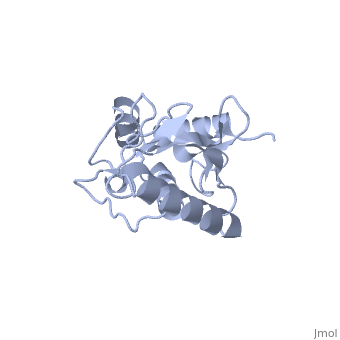Ubc9 is a ubiquitin-conjugating enzyme (E2) whose function involves transfer of ubiquitin or small ubiquitin-like modifier (SUMO) from activating enzyme (E1) to its designated substrate [1].
Structure
Murine/human Ubc9 exhibits a single domain structure consisting of both alpha helices and beta-pleated sheets. Cys93 has been identified as the active residue and is located on a loop of amino acids (78-108) between beta sheet four and alpha helix two [1].
Function
Ubc9 is a part of the SUMOylation process. It is the enzyme responsible for ligating the SUMO to the protein. Depending on whether the reaction is done in vitro, it will ligate the SUMO directly to the substrate, and if done in vivo, the SUMO will be ligated to the conjugating enzyme and then put onto the substrate [2].
-
Disease
Expression of Ubc9 has been found to be related to causing human diseases such as cancer, neurodegenerative diseases, and heart diseases. Studies have shown it to interact with tumor suppressor proteins such as p53, p63, and p73 and fundamental in the tumor progression and preventing apoptotic pathways. [3]
-
Relevance
-
Structural highlights
-
Anything in this section will appear adjacent to the 3D structure and will be scrollable.

